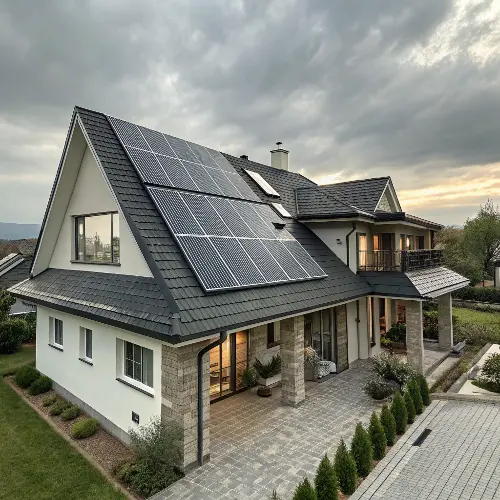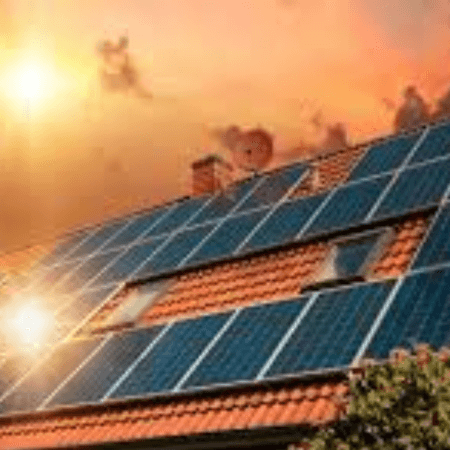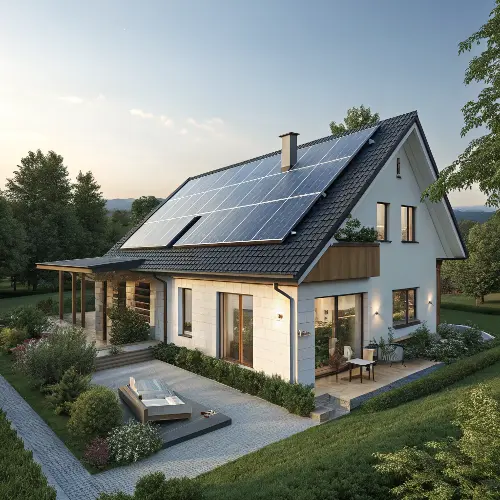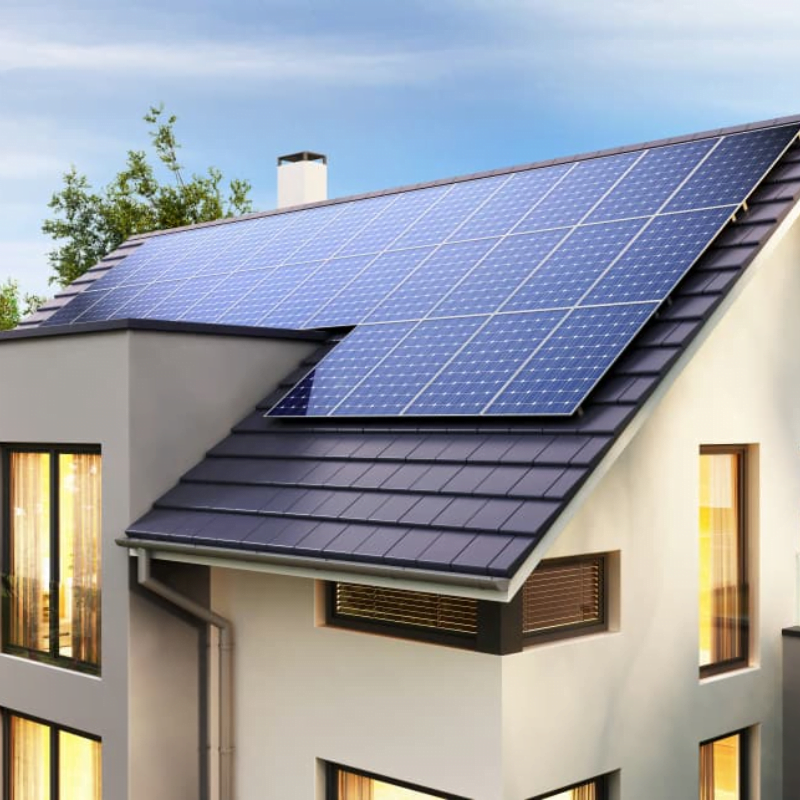Residential Rooftop Solar System in India
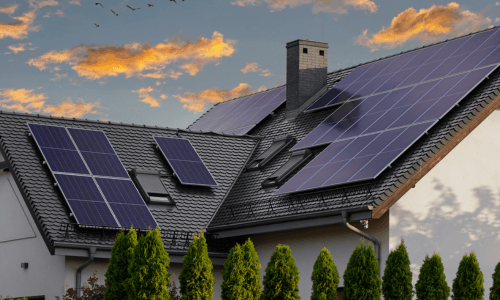
A rooftop solar system for home is one of the most efficient ways for homeowners to save money and switch to clean, renewable energy. Solar panels installed on your rooftop generate electricity directly from the sun, helping you reduce monthly electricity bills and minimize dependence on the grid.
In India, more and more families are choosing residential rooftop solar systems because they provide long-term savings, government subsidy benefits, and reliable power—all while contributing to a greener environment. At Synergy Solar, we specialize in supplying and installing rooftop solar systems for homes, ensuring every homeowner gets maximum savings and a hassle-free installation experience.
Benefits of Residential Rooftop Solar
Lower Electricity Bills – Save up to 70–80% on monthly bills.
Government Subsidy – Residential users get up to 40% subsidy on small systems.
Net Metering Advantage – Export surplus electricity to the grid and earn credits.
Eco-Friendly – Reduce carbon footprint and support India’s renewable energy goals.
Long Lifespan – Solar panels last 25+ years with minimal maintenance.
Property Value – Homes with solar installations have higher resale value.
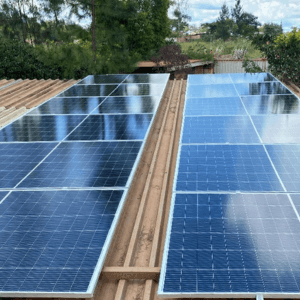
Types of Rooftop Solar Systems for Homes
At Synergy Solar, we help homeowners choose the right rooftop solar system based on their energy needs, budget, and roof space. Residential solar systems mainly come in three types – On-Grid, Off-Grid, and Hybrid – each designed for different situations.
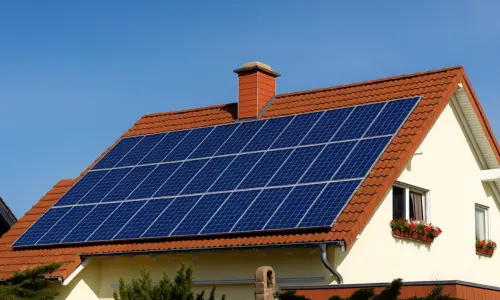
On-Grid Rooftop Solar System
This type of system is connected to the electricity board (grid). It powers your house during the day, and any extra electricity goes back to the grid. You get credits on your bill through net metering. It is low in cost and easy to maintain, but it will not work during power cuts. This type is a good option for apartments in cities with stable electricity.
Grid-Tied Residential Rooftop Solar Solutions
| Roof Area (Sq. Ft.) | System Size (kW) | Inverter | No. of Panels (540 Wp each) | Annual Generation (Units) |
| 100 – 200 | 1 kW | Single Phase | 2 Panels | ~1,400 units |
| 200 – 300 | 2 kW | Single Phase | 4 Panels | ~2,800 units |
| 300 – 500 | 3 kW | Single / Three | 6 Panels | ~4,200 units |
| 500 – 700 | 5 kW | Single / Three | 10 Panels | ~7,000 units |
| 700 – 1000 | 8 kW | Three Phase | 15 Panels | ~11,000 units |
| 1000 – 1200 | 10 kW | Three Phase | 18 Panels | ~14,000 units |
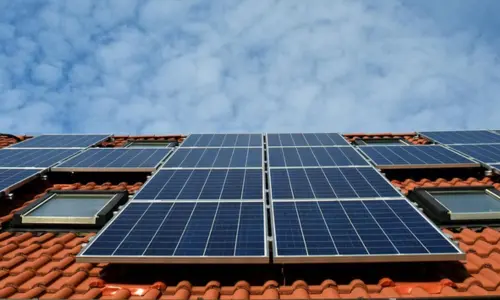
Off-Grid Rooftop Solar System
This system does not depend on the electricity board. It comes with batteries to store solar power, so you can use it even at night or when there is a power cut. It gives you full independence but costs more because of the batteries. It is mostly used in homes in rural areas where power cuts are frequent.
Off-Grid rooftop solar for residential buildings (with Battery Backup)
| Roof Area (Sq. Ft.) | System Size (kW) | Inverter | No. of Panels (540 Wp each) | Battery Bank | Annual Generation (Units) |
| 100 – 200 | 2 kW | Single Phase | 2 Panels | 2 x 12V 150Ah | ~1,400 units |
| 200 – 300 | 3kW | Single Phase | 4 Panels | 4 x 12V 150Ah | ~2,600 units |
| 300 – 500 | 5kW | Single Phase | 6 Panels | 8 x 12V 150Ah | ~5,000 units |
| 500 – 700 | 7.5 kW | Single Phase | 10 Panels | 10 x 12V 150Ah | ~7,000 units |
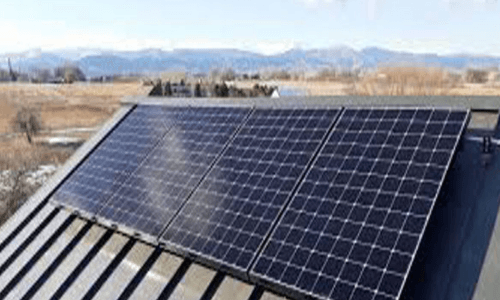
Hybrid Rooftop Solar System
A hybrid system is a mix of both on-grid and off-grid. It runs your appliances, stores extra energy in batteries, and also sends surplus to the grid. It provides both bill savings and backup during outages, making it suitable for villas or premium houses that need uninterrupted power.
Typical Home Packages (Hybrid, Grid-Tied with Battery)
| System Size (kW) | Hybrid Inverter | No. of Panels (540 Wp each) | Battery (usable kWh) | Annual Generation (Units) |
| 3 KW | Single Phase | 6 Panels | 3–5 kWh | ~4,200 |
| 5 KW | Single/Three-phase | 10 Panels | 5–10 kWh | ~7,000 |
| 8 KW | Three-phase | 15 Panels | 10–15 kWh | ~11,000 |
| 10 KW | Three-phase | 18 Panels | 10–20 kWh | ~14,000 |
Residential Rooftop Solar Cost & ROI in India
Typical Cost Overview (2025 Estimates)
- Average cost (after subsidy): ₹45,000–₹60,000 per kW for residential systems.
- Example: A 3 kW rooftop solar system typically costs around ₹1.2–₹1.8 lakhs after subsidy
Example Cost Breakdown (3 kW System)
| Component | Typical Cost |
| Solar Panels (3 kW) | ₹90,000–₹120,000 |
| Inverter & Structure | ₹30,000–₹50,000 |
| Installation, Wiring, Safety | ₹20,000–₹40,000 |
| Subtotal | ₹1.5–₹2.1 lakhs |
| After Subsidy (20–40%) | ₹90,000–₹1.5 lakhs |
Why It’s a Smart Investment
High ROI: Residential rooftop solar systems typically yield 18–25% annual returns — much better than most traditional investments.
Fast Payback: With subsidies and net metering, most homeowners recover their investment within 3–5 years.
Long-Term Gains: After payback, virtually “free” electricity provides savings for up to 25 years.
Savings & ROI of Residential Rooftop Solar
| Metric | 3 kW System Estimate |
| Annual Generation | ~4,200 units |
| Electricity Rate | ₹7/unit (avg) |
| Annual Savings | ~₹29,400 |
| Payback Period | ~3–5 years |
| Lifetime Savings (25 yrs) | ₹7–9 lakhs |
| Approx. Annual ROI | 18–25% |
Government Subsidy for Residential Rooftop Solar
The Indian government provides subsidies through MNRE and state DISCOMs for residential systems:
Up to 40% subsidy for systems up to 3 kW.
20% subsidy for systems between 4–10 kW.
Subsidy is applicable only for On-Grid systems (not off-grid).
At Synergy Solar, we help homeowners with rooftop solar registration, subsidy application, and approvals for a hassle-free experience.
Our Projects
Why Choose Synergy Solar for Your Home Rooftop Solar?
When it comes to powering your home with solar, you don’t just need panels — you need a partner you can trust. That’s where Synergy Solar stands out.
Trusted by Hundreds of Families
We have installed rooftop solar systems for countless homes across India, helping families cut electricity bills by up to 70–80%.
Clean Energy, Smarter Homes
By choosing Synergy Solar, you don’t just save money — you also make your home greener, sustainable, and future-ready.
Subsidy & Savings Made Simple
Our team handles the entire government subsidy and net metering process, ensuring you get maximum benefits with minimum hassle.
Smart Monitoring & 24/7 Support
Track your solar performance anytime through mobile apps, and count on our expert service team for quick support whenever needed.
Tailored Solutions for Every Home
Whether you live in an apartment, independent house, or villa, we design a solar solution that perfectly fits your roof space, budget, and power needs.
High-Quality & Long-Lasting Systems
We use only MNRE-approved solar panels, inverters, and structures, ensuring your system lasts 25+ years with minimal maintenance.
FAQs – Residential Rooftop Solar in India
How much does a residential rooftop solar system cost in India?
A residential rooftop solar system typically costs ₹45,000–₹60,000 per kW after subsidy. For example, a 3 kW system for a medium-sized home costs around ₹1.2–1.5 lakhs after subsidy.
Is subsidy available for home rooftop solar systems?
Yes. Under the MNRE scheme, homeowners can get a 40% subsidy for up to 3 kW and 20% subsidy for 4–10 kW systems. The subsidy applies only to on-grid and hybrid systems.
How much space is required for rooftop solar at home?
On average, you need about 100 sq. ft. of shadow-free roof space per kW. So, a 3 kW system needs ~300 sq. ft., and a 5 kW system needs ~500 sq. ft.
Can I run AC, fridge, and other appliances on rooftop solar?
Yes. A 3–5 kW rooftop solar system can power appliances like ACs, refrigerators, washing machines, fans, and lights, depending on your usage.
How do I apply for a rooftop solar subsidy in India?
You can apply through the National Rooftop Solar Portal or your state DISCOM. At Synergy Solar, we help homeowners with registration, approvals, and documentation.
How long do solar panels last on rooftops?
High-quality residential solar panels last 25–30 years. Inverters last 8–10 years, while batteries (for hybrid/off-grid systems) last 5–7 years.
What is the payback period for a home rooftop solar system?
Most homeowners recover their investment in 3–5 years. After that, solar power is almost free for the remaining 20+ years of the system’s life.
Do rooftop solar systems work during power cuts?
• On-Grid systems shut down during outages.
• Off-Grid and Hybrid systems keep running using battery backup.

